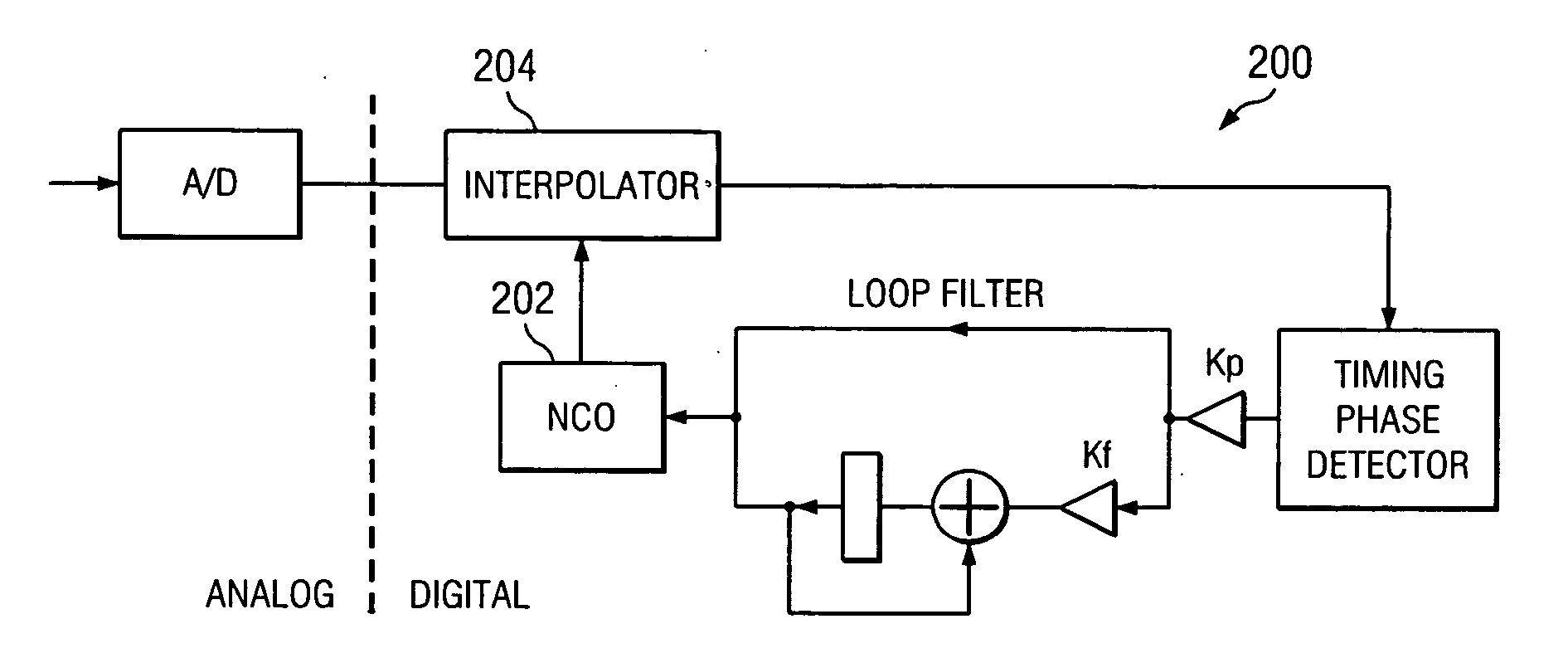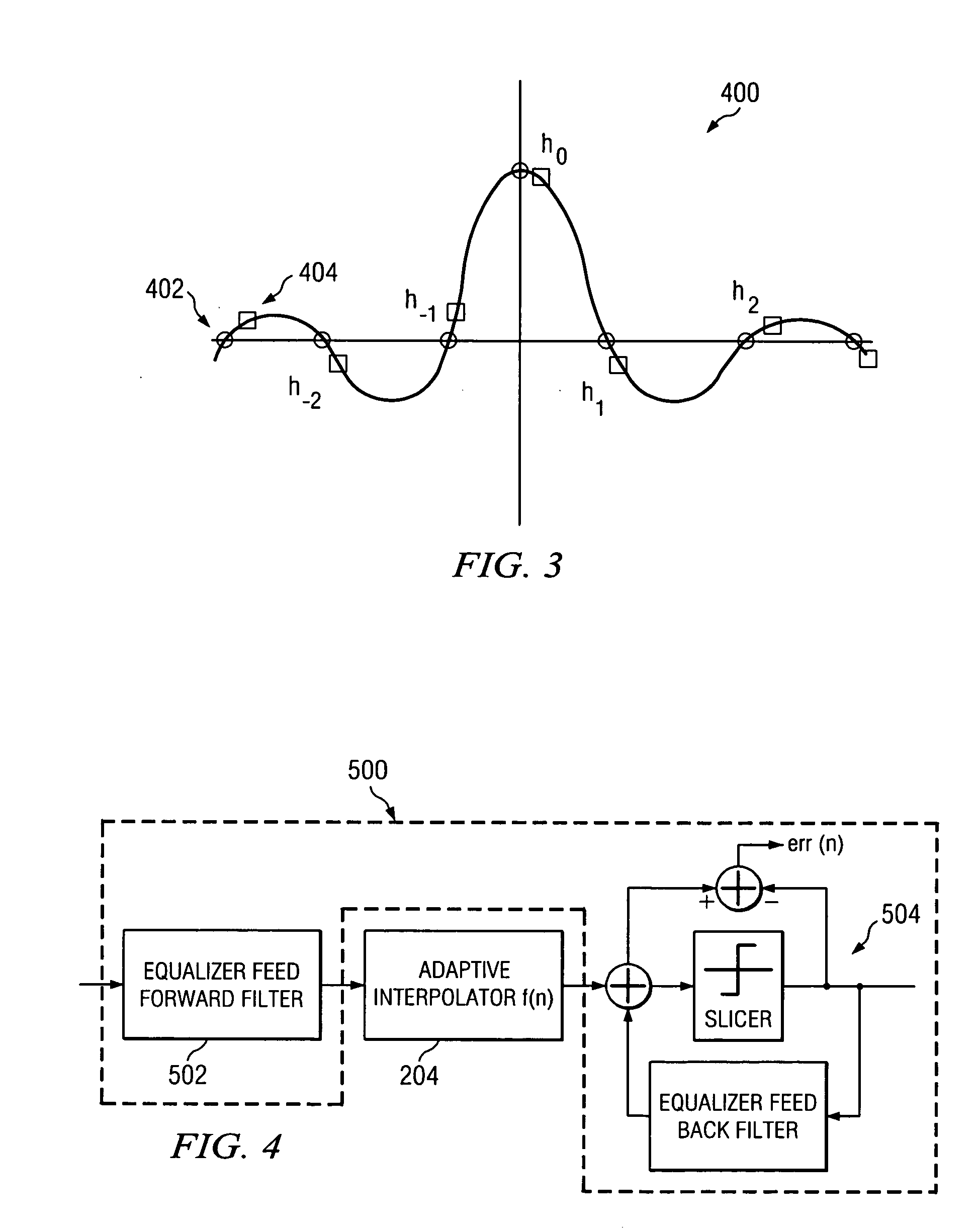Timing recovery of PAM signals using baud rate interpolation
a timing recovery and pam technology, applied in the field of communication techniques, can solve the problems of inability to use standard interpolation techniques and expensive solutions, and achieve the effects of smooth channel pulse response, reduced complexity of analog clock control circuits, and simple and inexpensive control of a/d clocks
- Summary
- Abstract
- Description
- Claims
- Application Information
AI Technical Summary
Benefits of technology
Problems solved by technology
Method used
Image
Examples
Embodiment Construction
[0040] In order to facilitate a better understanding of the preferred embodiments described herein below, a discussion is first presented with reference to FIG. 1a, FIG. 1b and FIG. 2, wherein FIG. 1a illustrates a classical timing recovery function structure 100 that employs direct A / D clock control. Consider first a pulse amplitude modulation (PAM) communication signal that is defined as: x(t)=∑nanp(t-nT)(1)
where {αn} are the data symbols (usually taken from a discrete constellation) and p(t) is the modulation pulse shape. The signal that reaches the receiver can be modeled as: r(t)=∑nanh[t-nT-τ(t)](2)
where h(t) is the total pulse shape (including the modulation pulse shape, the channel impulse response and the receiver analog front end impulse response), and τ(t) is the timing error. The timing error contains three main impairments: timing phase error, symbol rate mismatch and random jitter:
τ(t)=τ0+k·t+ε(t) (3)
where τ0 is the timing phase error, k corresponds to ...
PUM
 Login to View More
Login to View More Abstract
Description
Claims
Application Information
 Login to View More
Login to View More - R&D
- Intellectual Property
- Life Sciences
- Materials
- Tech Scout
- Unparalleled Data Quality
- Higher Quality Content
- 60% Fewer Hallucinations
Browse by: Latest US Patents, China's latest patents, Technical Efficacy Thesaurus, Application Domain, Technology Topic, Popular Technical Reports.
© 2025 PatSnap. All rights reserved.Legal|Privacy policy|Modern Slavery Act Transparency Statement|Sitemap|About US| Contact US: help@patsnap.com



